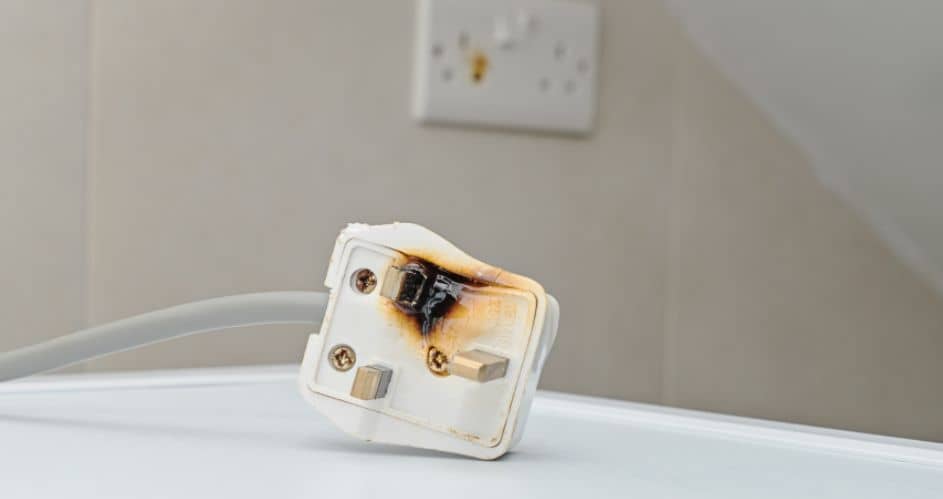
Portable Appliance Testing (PAT) is the routine checking of electrical appliances for safety. The process is particularly important for landlords who provide electronic appliances to their tenants as it is a step towards ensuring the safety of the tenants and their property.
PAT testing typically involves a physical assessment of the electronic equipment used by tenants for potential defects and hazards. If any equipment in their possession fails a PAT test, it’ll be quarantined and can’t be used on that property until it undergoes the necessary repairs.
Here are the things that landlords need to know about PAT testing.
Legal Requirements
The PAT testing requirement in the UK is a response to the Electricity At Work Regulations of 1989. These regulations require that any electrical equipment that has the potential to cause injury remains in a secure condition.
However, the regulations don’t make PAT testing a legal requirement. This leaves the responsibility of conducting it to the landlords.
With options like Skills Training Group’s PAT testing course and others, landlords may find it easy to access training on PAT testing. Also, they may be able to find someone to run PAT tests on their behalf if they aren’t as well trained.
Frequency Of PAT Testing
The UK government doesn’t have a law in place mandating the frequency of PAT Testing. Common practice, however, is to conduct the test once every year or at the start of a new tenancy.
However, there are some instances when the frequency of testing may increase. An excellent example of such cases is if there’s a change in occupancy or a new electrical item is installed in the building.
Also, the type of equipment determines the frequency of inspection. Experts recommend that small appliances such as electric kettles undergo testing every two years, while larger appliances like washing machines get their turn every four years.
Scope Of The Testing
Landlords must test any appliances or electrical items a tenant provides as part of their property. This includes kitchen appliances such as cookers, ovens, fridges, and other electrical items the tenant uses.
Also, it can include lighting fixtures, power tools, or even a desktop computer if the tenant operates in an office environment. The landlord must test each item before it’s installed in the building and again every year after installation.
Record-Keeping
The landlord isn’t mandated to keep records of every PAT testing conducted on their properties. However, maintaining a clear description, often called a PAT testing log, is advisable. These records serve as evidence of their commitment to electrical safety and can also be crucial in an accident or dispute.
A good PAT testing log should include the tester’s name, the date of the test, the results of the test, and any actions taken to rectify identified issues. The log should also document any instances of repair or replacement following a failed PAT test.
These documents must demonstrate the steps the landlord has taken to ensure the safety of their tenants. Proper records can protect landlords from liability in case of a fire outbreak or disaster occasioned by electrical appliance malfunctions.
Professional Inspection
While landlords can perform basic safety checks independently, hiring a qualified professional for PAT testing is often the best course of action. Their expertise ensures an accurate examination of the electrical equipment in the building, going beyond what the untrained eye might miss.
Professional inspections identify potential faults early on, which can help prevent electrical accidents and ensure the safety of all who use the appliances.
Also, these services provide landlords with comprehensive documentation that outlines their commitment to tenant safety and the steps they’ll take or have taken during the inspection. Such reports may significantly factor in any legal disputes or insurance claims.
Furthermore, hiring a professional tester allows landlords to focus on their core responsibilities of offering better services to their tenants while the professionals handle the electrical end.
Benefits of PAT Testing
PAT testing can benefit landlords in many ways. Some of them are:
Ensure that the appliances in the property are safe to use.
Save money on repairs or replacement as you can detect faults earlier
Reduce the risk of a fire or any disaster resulting from faulty appliances.
Protect tenants and properties from harm by faulty appliances.
Compliance with legal requirements to ensure the safety of clients.
Peace of mind knowing that the equipment they’re using is safe and compliant with legal requirements
In addition to the above-listed benefits, PAT testing also improves a landlord’s reputation by demonstrating a commitment to safety and compliance.
Parting Shot
PAT testing is a vital process for landlords to ensure the safety of their tenants. As a best practice, landlords should have all undergo PAT testing before a new tenant moves in and conduct regular testing every two to four years.
Yes, it’s an additional expense, but PAT testing is a small investment that can lead to significant long-term benefits for both landlords and tenants.